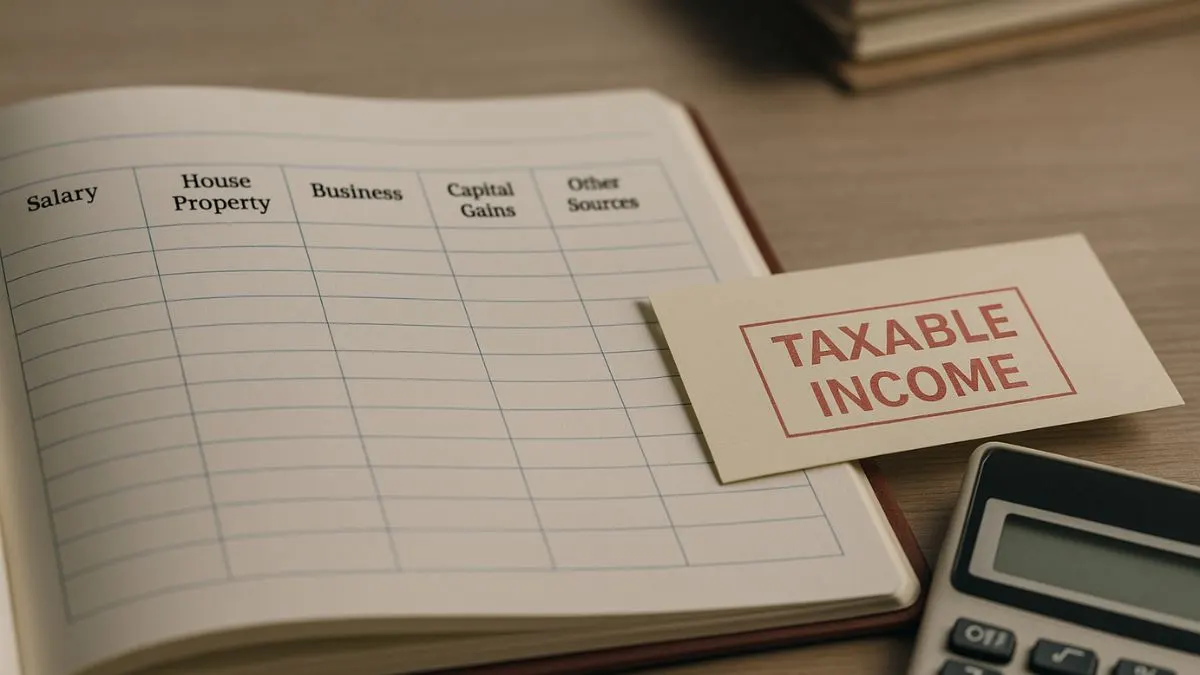
The Indian Income Tax Act provides various sections under which income, profits & gains are charged to tax. However, to simplify the game of taxation, the Act qua the Income Tax divides income into various categories which are called heads of income under the Income Tax Act.
The part that deals with this is Section 14. This rule avoids haphazard organization of income, and is beneficial to both the Government and the taxpayer in computing liability on a rational basis. One of the heads being, Section 15 that determines the taxability on income from Salary which is the predominant kind of income to an individual.
Knowing these heads of income is important since it determines how you file returns, what are the deductions available & how your tax liability is calculated.
The Transition to 3.5 – Section 14 – The Genus of Classification
The basis of the classification of income into five heads of income is given under Section 14 of the Income Tax Act, 1961. This is a “special provision as to income-tax” insofar as the Act provides for the fact of that income being taxed only once under the relevant head.
The five heads of income are:
- Income from Salaries
- Income from House Property
- Income from Profits and Gains of Business or Profession
- Capital Gains
- Income from Other Sources
This categorization is clear & avoids double taxation. For instance, rental income is always taxed under House Property irrespective of who is its owner; it could be a businessman’s property.
Head 1 – Salary (Section 15 to 17)
The first source of income is Salary. Section 15 provides for the chargeability of income under the head 'Salaries'. It includes:
- Basic salary, allowances, perquisites.
- Gratuity, pension, bonus, leave encashment."
- Employer’s contribution to provident fund in excess of specified limit.
Even an advance salary and arrears of salary are booked in the year when they were received.
Also Read: Understanding the Standard Deduction for Salaried Individuals
Head 2 – Income from House Property (Section 22 to 27)
The head is Income from House Property in the second. This includes rents & royalties derived from buildings or land.
Important points:
- Tax only the annual income from the property.
- Special provisions for self-occupied property (nil annual value etc.).
- Deduction for home loan interest & standard deduction of 30% is allowed.
- Income is taxable as notional income even if unpaid rent by tenants.
Head 3 – Profits and Gains of Business or Profession (Section 28 to 44DB)
The third head is Profits and Gains from Business or Profession. It covers:
- Profits from trade, commerce, or navigation.
- Professional income, like a doctor, lawyer or consultant.
- Income from partnership firms.
Expenses like rent, salaries of workers, cost of raw material can be deducted. This title features a significant amount of corporate & self-employment taxes.
Head 4 – Capital Gains (Section 45 to 55A)
Capital Gains occur when an individual sells or disposes of a capital asset.
Types:
- Short Term Capital Gains (STCG) – if held for less than 36/24/12 months.
- Long Term Capital Gains (LTCG) – held for more than the prescribed period.
Exemptions under Sections 54, 54EC etc. allow saving tax by reinvesting in new assets.
Head 5 – Income from Other Sources (Section 56 to 59)
This is the residual head of income. Examples include:
- Interest earned from fixed deposits, bonds, or loans.
- Dividends, lotteries, betting, horse races."
- Gifts received (non-exempted).
This ensures no income escapes taxation.
Also Read: What You Must Know About Income from Other Sources
Why Classification of Income Matters?
- Proper calculation of tax – Each head has its own rules.
- Deductions – Differ per head.
- Prevents double taxation.
- Ensures compliance & transparency.
Example: Salary income deductions under Section 16, Business income deductions under Sections 30–37.
Illustration – Heads of Income in Practice
Mr. Verma, a company employee:
- Salary taxed under Income from Salaries – Section 15.
- Rental income taxed under House Property.
- Share trading gains taxed under Capital Gains.
- Interest income taxed under Other Sources.
This shows how Section 14 ensures proper classification.
Section 15 of the Act: Taxability of Salary
While Section 14 provides for classification, Section 15 deals with taxability of salary income.
Salary is taxable:
- On receipt basis or due basis, whichever is earlier."
- Prevents deferring tax liability by shifting years.
Judicial Interpretations
- CIT Vs. B.C. Srinivasa Setty – on capital assets & capital gains.
- Karanpura Development Co. vs. CIT – difference between business income & house property income.
These highlight real tax implications of classification.
Also Read: Invest ₹60,000 in Post Office Scheme for Your Child & Get ₹16.27 Lakh – Full Maturity Timeline
Practical Guidance for Taxpayers
- Classify all income under five heads.
- Keep salary slips, rent agreements, asset sale proofs, bank certificates.
- Apply exemptions & deductions judiciously.
- File returns before due dates to avoid penalties.
Conclusion
Heads of income under the Income Tax Act, 1961 (Section 14) include: Salaries, House Property, Profits and Gains of Business or Profession, Capital Gains, and Income from Other Sources. Of these, Section 15 deals with taxability of salary income.
Categorization avoids arbitrary taxation, misuse, confusion or ambiguity of treatment to taxpayers & government.
✅ Need professional assistance on classifying income and maximizing tax breaks? Visit Callmyca.com – India’s leading platform for Tax Filing, Compliance, and Savings.










